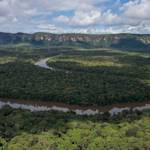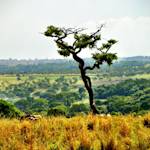Valdivian Coastal Reserve, Chile's ancient rainforest
2005 CE • Chile
"The Valdivian Coastal Reserve is part of an ancient temperate rainforest rising from Chile’s southern coastline. This vast stretch of coastal forest is a remnant of millennia past — when it was connected to the forests of New Zealand and Australia. In fact, some species are more closely related to species from those distant places rather than the Americas. During the last Ice Age, this coastal range served as a freeze-free refuge for a multitude of species found nowhere else on Earth. Among these unique species are two of the planet’s longest living tree species. Olivillo trees, which can live up to 400 years, survive in large stands only on the western slopes of this range, and alerce trees, which resemble North American giant sequoias, have life spans of up to 4,000 years . . . These forests also harbor an incredible wealth of wildlife including one of the world’s largest woodpeckers; the world’s smallest deer; a small tree dwelling marsupial (‘mountain monkey’) considered by scientists to be a "living fossil;" at least 58 bird species; and several rare carnivores, such as the southern river otter . . . The March 22, 2005 inauguration of the Valdivian Coastal Reserve was a major milestone towards preserving this temperate rainforest."
"Chile's Valdivian Coastal Reserve: Saving Ancient Forests," The Nature Conservancy.
Image: LBM1948, CC BY-SA 4.0, via Wikimedia Commons


Learn about Maya Lin’s fifth and final memorial: a multi-platform science based artwork that presents an ecological history of our world - past, present, and future.

Discover ecological histories and stories of former abundance, loss, and recovery on the map of memory.

Learn how we can reduce our emissions and protect and restore species and habitats – around the world.

See how art can help us rethink the problems we face, and give us hope that each one of us can make a difference.

Help make a global memorial something personal and close to home. Share your stories of the natural world.


